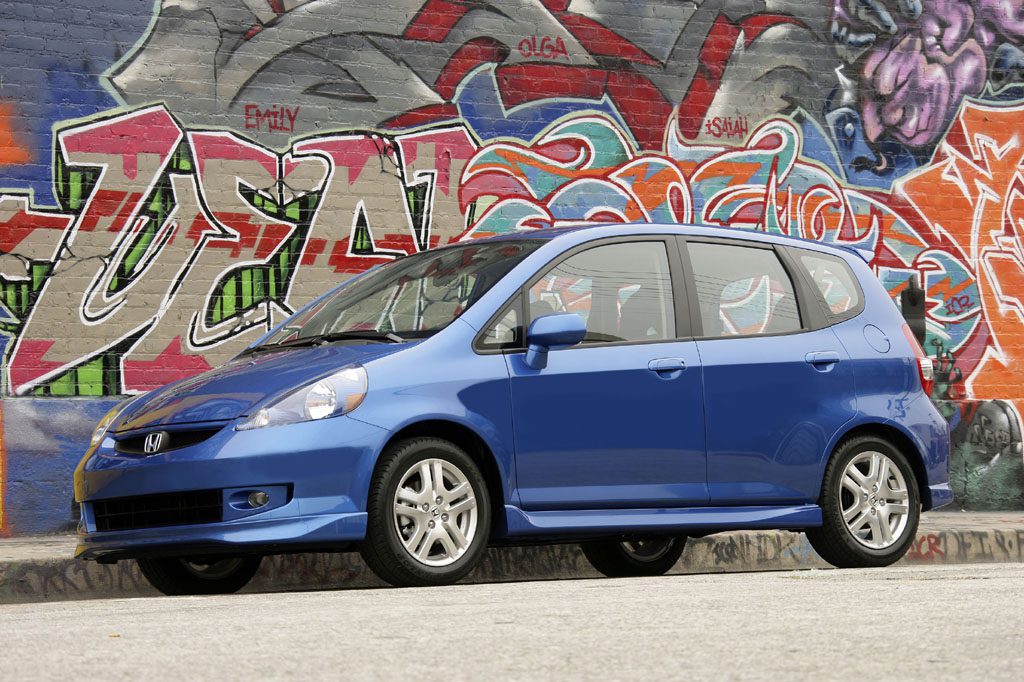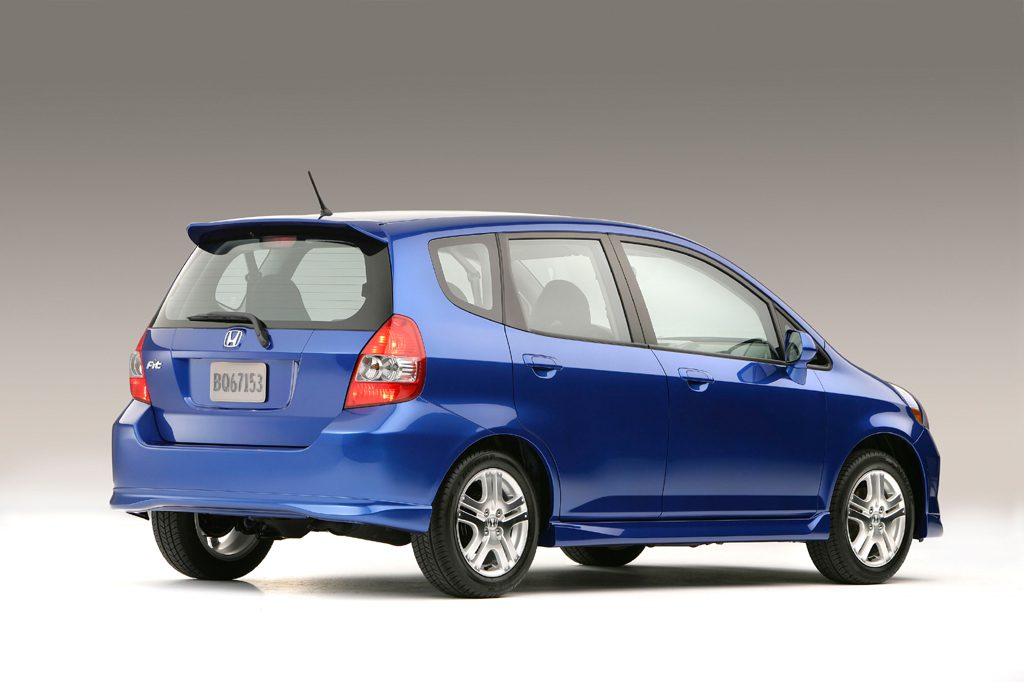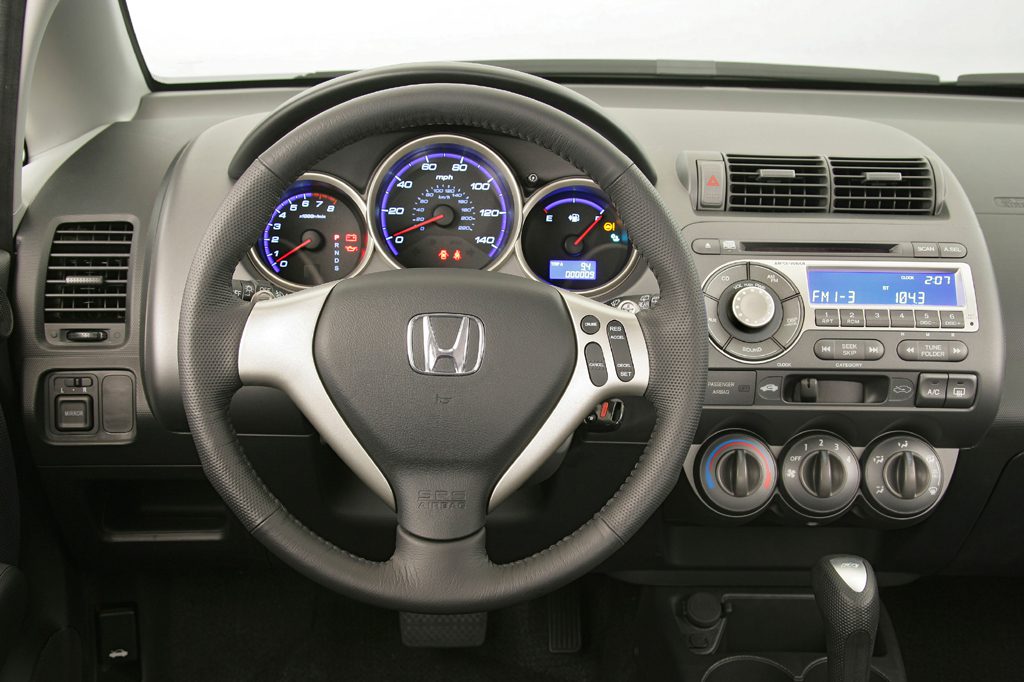| Subcompact car; Built in Japan |
|
|
| Good condition price range: $7,500 – $10,800* |

2008 Honda Fit

2008 Honda Fit

2008 Honda Fit
| Pros: |
|
| Cons: |
|
Given the tiny footprint it places upon the road, Fit is likely the most space-efficient vehicle on sale in the United States. Though pricier than class rivals, Fit also offers an enviable blend of fuel economy and driving pleasure. Sure, a little more money could buy a more substantial-feeling car, including Honda’s own Civic, Mazda 3, or Hyundai Elantra. But you’ll be hard pressed to match Fit’s blend of thrift, clever packaging, standard safety features, spry road manners, and Honda pedigree. Cabin materials fall short of what we’ve come to expect from Honda, but this frugal subcompact still earns our Recommended honor.
Overview
Serving as Honda’s new entry-level model, this subcompact four-door, five-passenger hatchback wagon slotted below the compact Civic. Even though the front-drive Fit was 19.3 inches shorter overall than the Civic sedan, it had nearly equal passenger space and offered more cargo room. Base and Sport versions were offered, both with a 109-horsepower, 1.5-liter four-cylinder engine. A five-speed manual transmission was standard, and a five-speed automatic was optional. Sport models with automatic included manual-shift steering-wheel paddles.
Antilock braking, front side airbags, and curtain side airbags were standard. Every Fit had air conditioning, power windows and locks, and power mirrors. Exclusive to Sports were fog lamps, remote entry, cruise control, and a 200-watt audio system with digital media connection. Sport models also had 15-inch alloy wheels rather than the regular 14s, plus a roofline rear spoiler and an underbody kit.
Mounting the Fit’s fuel tank near the center of the vehicle permitted a lower cargo floor. Rear seat cushions flipped vertically to create space for bulky cargo behind the front seats and also folded down along with the seatbacks to make a flat load floor. This 60/40 split “Magic Seat” offered a total of five configurations. Competitors to the Fit included the larger Ford Focus, as well as the subcompact Nissan Versa, Hyundai Accent, and Suzuki SX4.
Yearly Updates
| 2008 Fit Except for two new colors and a standard tire-pressure monitor, changes were few for 2008. Again, Fit Sport models included larger alloy wheels and a 200-watt six-speaker audio system, as well as a full body aero kit and a roofline spoiler. |
